 |
 |
 |
| |
Temporal trends and impact of COVID-19 on the HIV cascade of care across Europe between 2016-2021
|
| |
| |
COVID Had Minor Impact on HIV Visits and Suppression in EuroSIDA
EACS 2023, October 18-21, 2023, Warsaw
Mark Mascolini
COVID-19 roared through Europe in 2020 and 2021, apparently upending routine medical care in most ways imaginable. But scrutiny of data from the pan-European EuroSIDA cohort shows that the pandemic had a modest and transient impact on critical HIV care cascade checkpoints like in-person visits, antiretroviral uptake, and viral suppression.
Lars Peters and EuroSIDA colleagues reported that before COVID's advent, antiretroviral therapy (ART) coverage and viral suppression had been striding upward across the continent. The pandemic disrupted routine care of chronic maladies, an especially worrisome problem for people with a chronic disease that requires steady treatment and monitoring. Countries across Europe took steps "to keep HIV care systems resilient," Peters said. The assessment he presented at EACS 2023 aimed to see if that effort worked.
The analysis involved EuroSIDA cohort members under follow-up in a calendar year from 2016 through 2021. The study excluded EuroSIDA sites that did not submit data for at least 1 study year or submitted data less than 70% complete. Argentina, though an official EuroSIDA country, got left out of this analysis.
EuroSIDA investigators defined being on ART as receiving at least one antiretroviral during a year; virologic suppression meant a latest viral load below 200 copies or below the assay's detection limit; and an in-person visit meant at least one weight or blood pressure measurement in a study year. Statisticians used multivariable logistic regression to pick out clinical and demographic factors linked to having an in-person visit or, among those taking ART, having a viral load below 200 copies.
This study focused on 7383 people followed at a EuroSIDA site that provided data for each year from 2016 through 2021. Eligible cohort members came from all five EuroSIDA regions; 72% were men, 34% men who have sex with men (MSM), 30% people who inject drug, and 90% white. Median age stood at 51 years (interquartile range 42 to 57); 29% had a pretreatment CD4 count below 500.
In-person visits stayed steady in 2016, 2017, and 2018 at between 71% and 72% of the study group, rose to 75.4% in 2019, dipped to 68.6% in 2020 as COVID arrived, then rebounded to 73.6% in 2021 as the pandemic starting winding down in Europe and healthcare systems struggled back toward normal. Peters cautioned that these percentages may be underestimates because they rely on blood pressure or weight measurements as proxies for visits, and some people probably don't get one of these measures at every visit.
Viral load got measured in slowly rising percentages of cohort members from 2016 (91.5%) to 2019 (94.0%). That percentage waned to 90.5% in the pandemic year 2020 but had already rebounded to 93.1% in 2021. The proportion of people getting a CD4 count recorded stayed essentially flat from 2016 through 2021, perhaps dipping marginally in 2020 and 2021. The percentage of cohort members who died varied between 1.1% and 1.4% across the 6 study years.
Despite the small drop in in-person visits in 2020, the percentage of people taking ART marched steadily upward across study years, reaching more than 97% in all five EuroSIDA regions in 2021. The proportion of cohort members with viral suppression did ebb slightly in 2020, a falloff the EuroSIDA investigators attributed to missing viral load data in that first pandemic year rather than to a surge in virologic failures. They noted that chances of pushing the viral load below 200 copies in people with known viral load results rose from year to year.
The multivariable regression analysis linked the year 2020 to lower odds of in-person visits. Compared with EuroSIDA's Central West region (France, Belgium, Germany, Switzerland, Austria), the other four regions all had lower odds of in-person visits. Compared with 2016, each later year-even 2020-was independently associated with higher odds of viral suppression below 200 copies. Compared with people 60 or older, all younger age brackets were linked to lower odds of viral suppression. Compared with MSM, people who inject drugs or acquired HIV heterosexually had lower odds of viral suppression. Compared with taking a nonnucleoside-based combination, taking a protease inhibitor combination lowered odds of viral suppression. People with cancer had a better chance of viral control than those without cancer.
The EuroSIDA group proposed two main conclusions:
"Despite a minor drop in in-person visits in 2020, we observed a consistent increase in ART coverage from 2016 to 2021, with ART uptake over 97% in all EuroSIDA regions in 2021."
"A slight decrease in viral suppression levels in 2020 was attributed to missing HIV RNA measurement data, while the likelihood of achieving viral suppression in those with known HIV RNA test results was increasing over the years."
Reference
1. Fursa O, Bannister W, Guaraldi G, et al. Temporal trends and impact of COVID-19 on the HIV cascade of care across Europe between 2016-2021. EACS 2023, October 18-21, 2023, Warsaw. Abstract OS1.05.
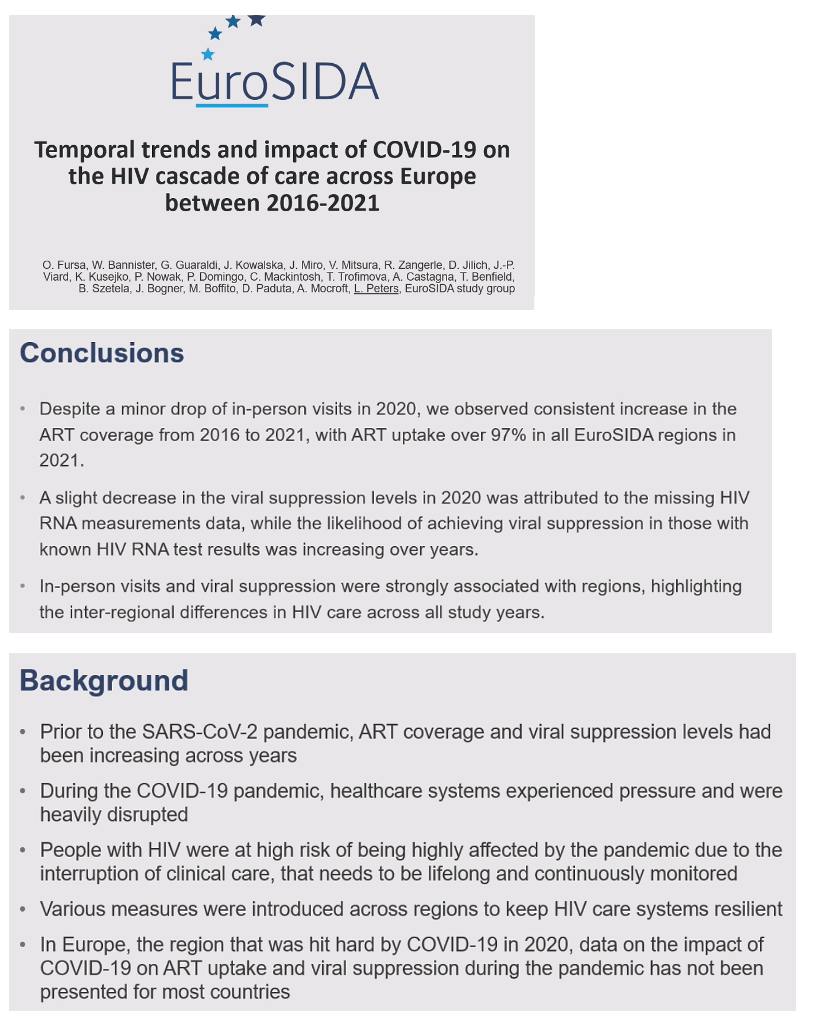
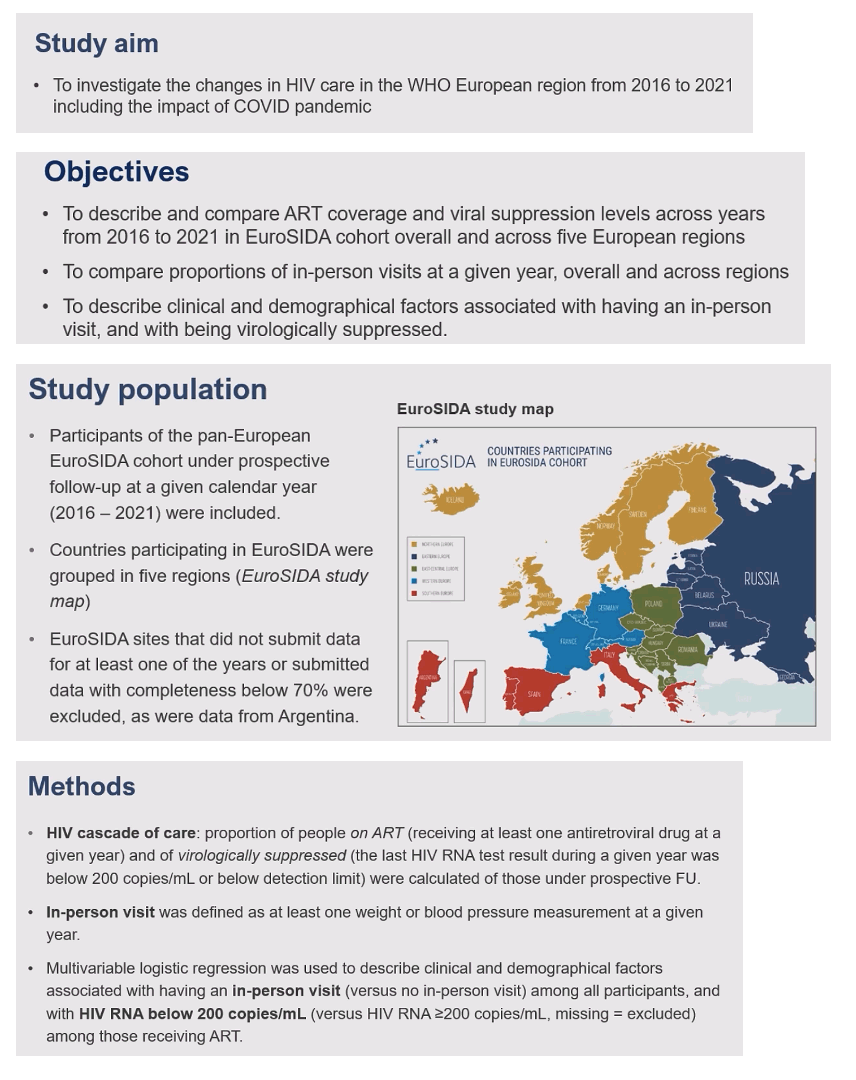
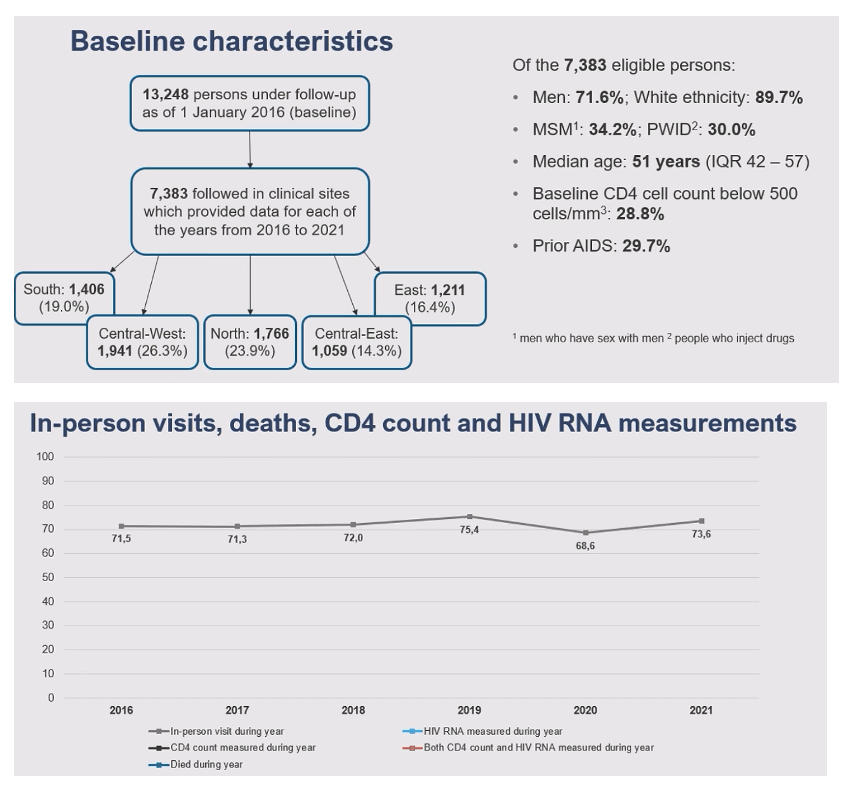
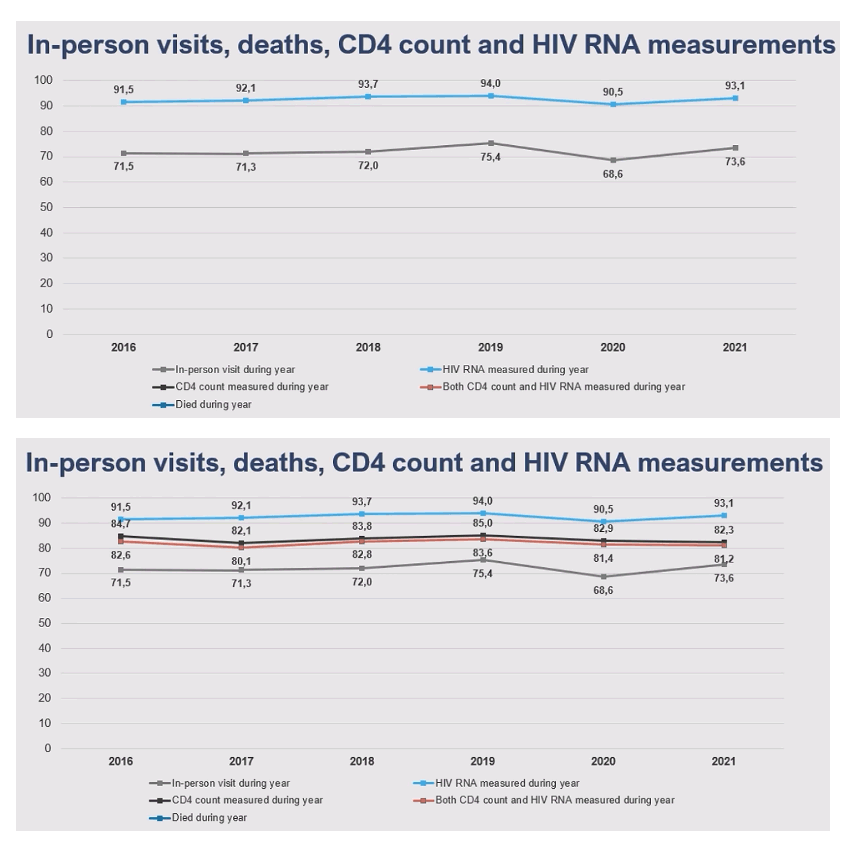
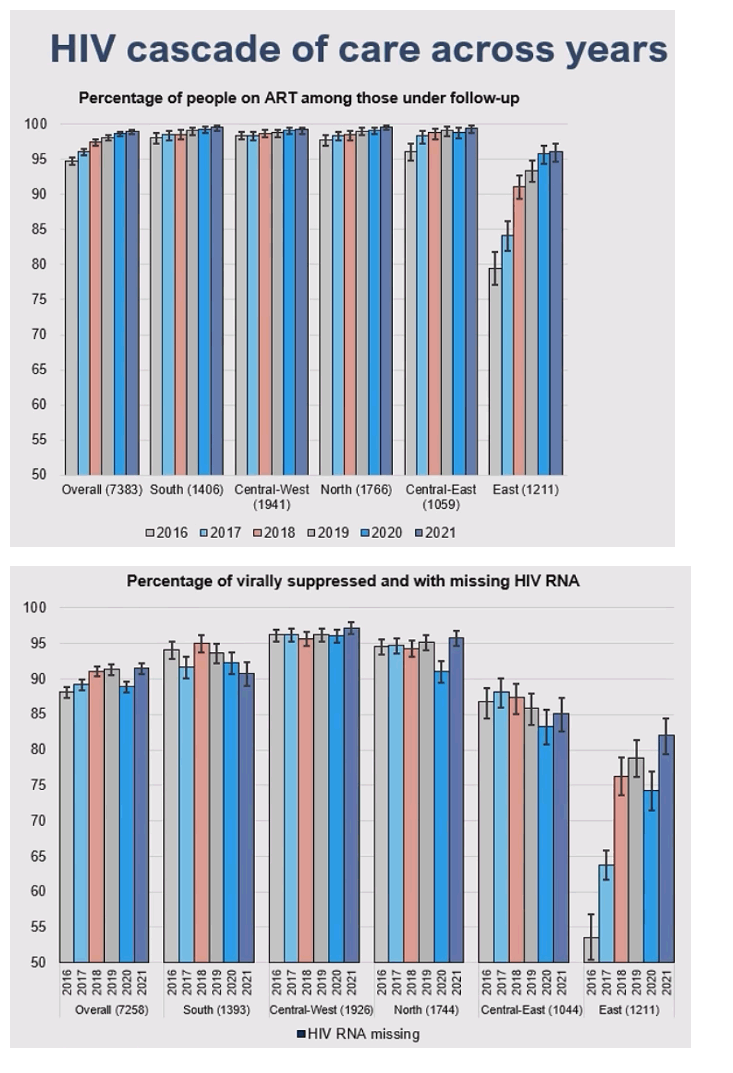
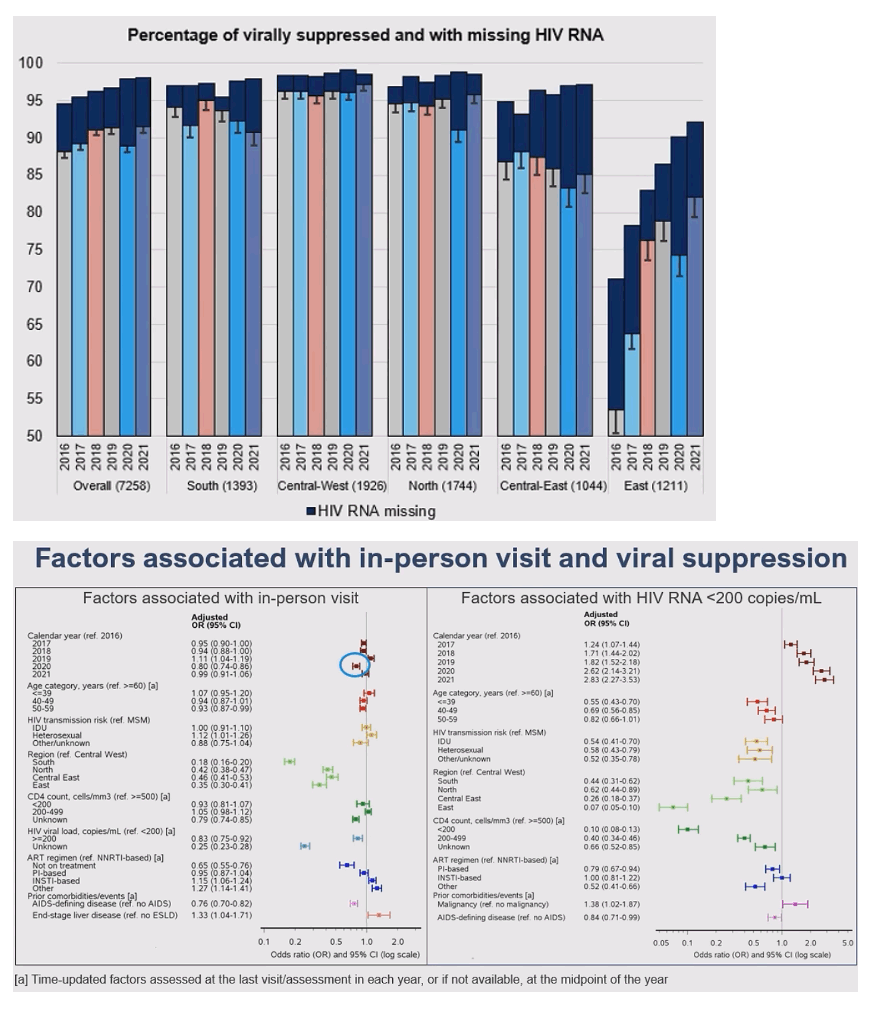
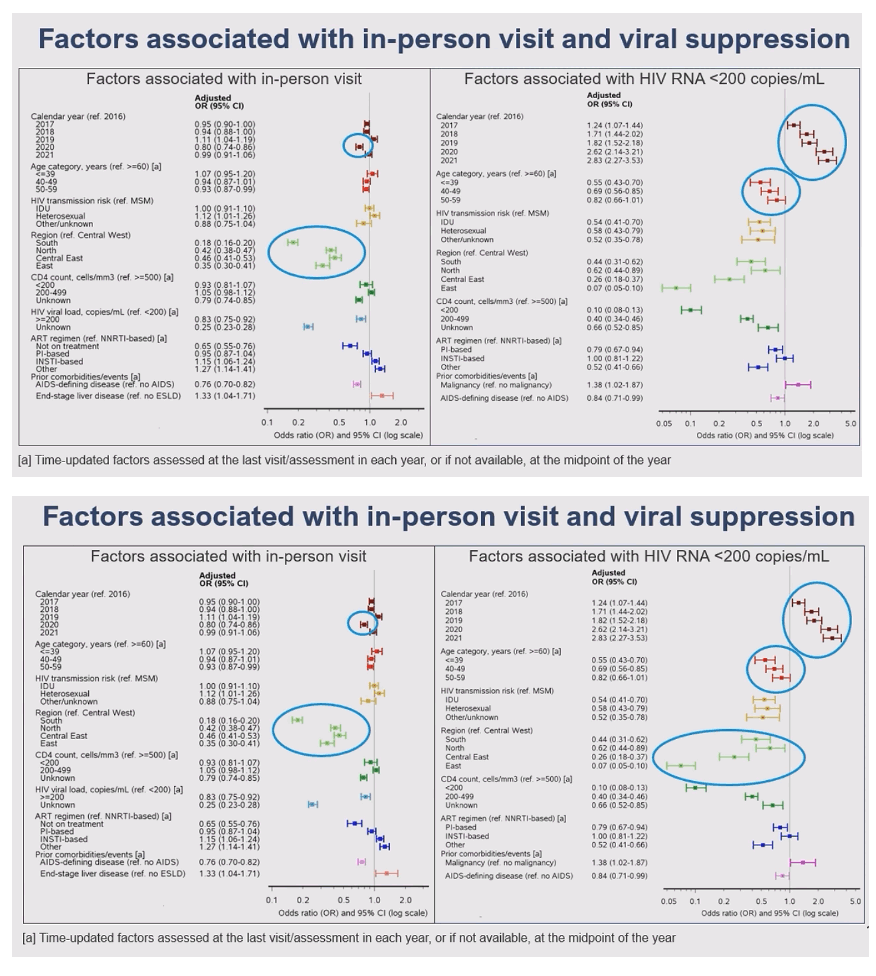
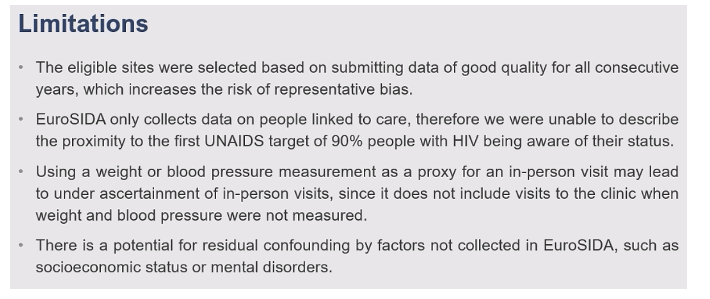
|
| |
|
 |
 |
|
|